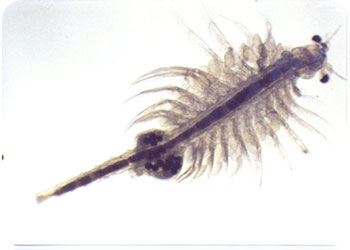The Jim Clegg laboratory has worked on the biochemical and biophysical mechanisms that allow certain invertebrates to live in what we consider to be highly stressful environments. Some of these animals can be said to be “extremophiles” because they thrive under conditions that kill most animals. These conditions include extremes of temperature and pressure, desiccation, anoxia, various forms of radiation and very high salinity. 
The favorite animal extremophile of the Clegg lab is the primitive crustacean known as Artemia, also called the brine shrimp. Although their interest in them concerns basic science, they are also of considerable commercial importance to the aquacultural and aquarium industries. The encysted embryos of Artemia, also called cysts, are arguably the most stress resistant of all animal life history stages and the motile (swimming) forms are among the most salt tolerant aquatic animals. Clegg and others working in this area have identified several proteins that act as “molecular chaperones” that protect macromolecules in the embryos from damage and destruction due to these various severe stresses. These molecular chaperones are clearly the products of evolution that enable these embryos to be extremophiles. Their goals include an understanding of the mechanisms by means of which this protection occurs.
Among Clegg lab collaborators are two Canadians, Tom MacRae (Dalhousie University) and Alden Warner (University of Windsor), Ralph Schill (University of Stuttgart, Germany), Wei-Jun Yang (Zhejiang University, Hangzhou, China) and Lynda Beladjal, Johan Mertens and Patrick Sorgeloos, all at Ghent University in Belgium. These highly respected scientists, and their students and colleagues are in the process of studying various aspects of animal extremophiles.
